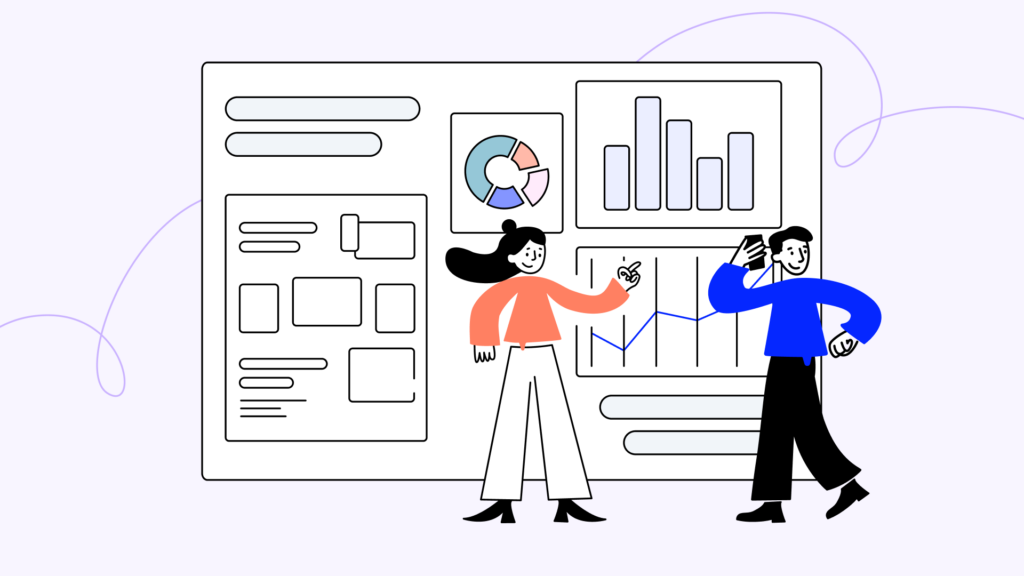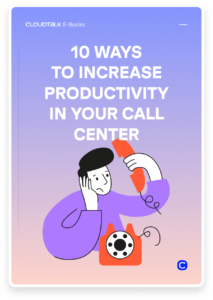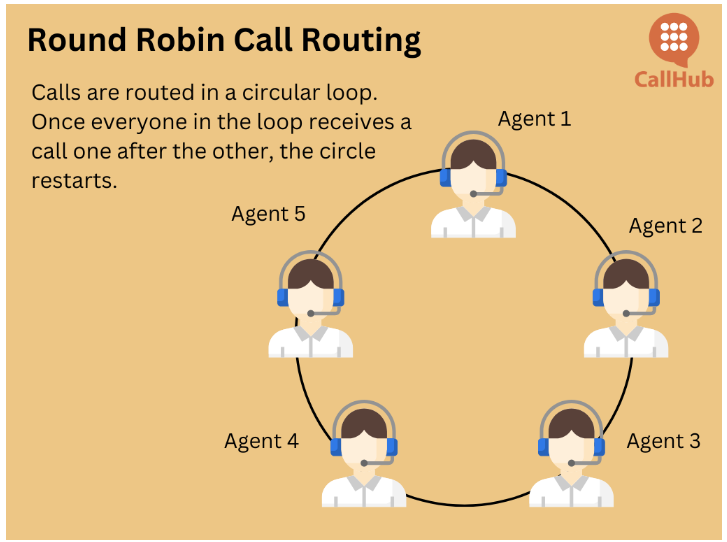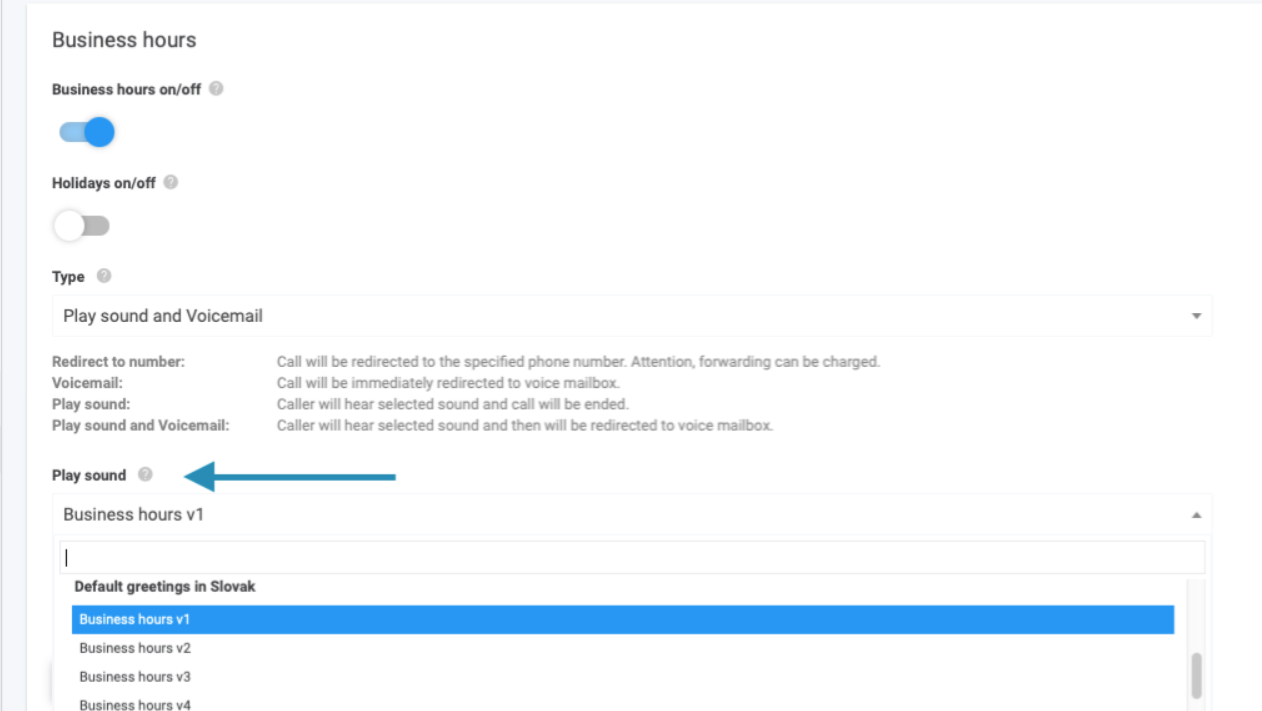Call Routing: Understand What It Is & How It Could Benefit Your Business

What’s the true power of excellent customer service? Well, 93% of customers say they’re likely to make repeat purchases with companies that offer just that, according to HubSpot Research.
One key element of excellent customer service is answering calls and handling queries as quickly as possible. That’s exactly what efficient call routing does for you.
Let’s find out how it works and how it can boost not only customer satisfaction but your business as a whole.
Key takeaways:
- Call routing is a function of business calling solutions. It helps you direct incoming calls to the right departments or agents.
- There are a variety of call routing types, including fixed order, round robin, skills-based, and more.
- Among other benefits, an efficient call routing system can help you deliver better customer experience, improve agent engagement, and save your business money.
- A few best practices for making the most of call routing include defining and customizing routing rules according to research, utilizing an informative IVR menu, and linking your calling solution to your CRM.
What Is Call Routing?
Call routing is a call management feature that helps businesses direct incoming calls to the most appropriate person or department. It automatically places calls in a queue and distributes them according to your pre-defined criteria.
This process uses Interactive Voice Response (IVR) and Automatic Call Distribution (ACD) technology. It enables you to manage a high volume of incoming calls while providing fast, high-quality customer support.
You’re probably picturing contact center call routing, but any type of business can use the technology.
Now that you know the call routing meaning, let’s find out how it works.
How Does Call Routing Work?
There are three key stages involved in phone routing:
Call Qualification
The first step is to find out what the caller wants. The system does this by collecting data through an auto-attendant or Interactive Voice Response (IVR) tool.
Callers will hear a pre-recorded greeting and a series of menu options or questions, which they’ll answer by speaking or using the phone keypad.
Call routing systems can also sometimes infer a caller’s purpose in other ways, including:
- From the number or extension dialed (if they called a number specific to accounts or sales, for instance)
- The caller ID, if the caller is already known to your business.
Call Queuing
IVR responses are analyzed with speech recognition and Natural Language Processing (NLP). The IVR or auto-attendant passes data to the ACD, which places the call into a queue. There may be different queues for different types of query, and you can also set up routing rules to prioritize certain calls (such as those from VIP customers). During this stage, the caller may hear hold music or a custom message.
Call Distribution
The final stage sees calls routed to the relevant people or departments. The call router system pulls calls from the queue and distributes them according to the rules you put in place. For maximum efficiency, you can program the system to direct calls to voicemail or schedule a call back if the intended recipient is unavailable.
Get the most out of your call center employees with these 10 proven methods for increasing productivity.

Different Types of Call Routing
There are many different types of inbound call routing, so you can pick the routing rule that best suits your needs, or use a combination.
Fixed Order Routing
Also called list-based or sequential routing, this means that all calls are initially sent to the first person on the list (Agent #1), whether or not anyone else is free.
If #1 is unavailable, the call goes to Agent #2 (then #3, then #4, and so on). As soon as #1 becomes available, they’re back at the top of the list.
When Might Your Business Use Fixed Order Routing?
Use fixed order routing when you want to prioritize one specific person above all others to answer calls.
Perhaps, for instance, you’re a small business with just a handful of employees to pick up the phone. One may be far more experienced than the others, so you want to ensure they answer most calls.
Round Robin Routing
Round robin routing (aka, rotary routing) is when you rotate call distribution through a team. Once every agent has taken a call, the rotation starts over with the first agent.
When Might Your Business Use Round Robin Routing?
Use this call route arrangement to ensure that everyone has a broadly equal chance to answer calls, rather than prioritizing agent #1.

Least Occupied or Idle-Time Based Routing
In this scenario, the ACD prioritizes the agent who’s been waiting the longest for a call, or the person who’s taken the least amount of calls during that day or shift.
When Might Your Business Use Idle-Time Based Routing?
Use this type of routing to provide a more balanced workload, reducing idle time and preventing any agents from being overworked.
Skills-Based Routing
This involves routing calls to whoever has the most appropriate skills, qualifications, or authority to handle each query. Typically, the ACD works with the IVR tool to match agents with customers based on the information provided.
When Might Your Business Use Skills-Based Routing?
Use skills-based routing if you have agents with diverse skill sets, such as the ability to speak another language or to handle complex technical queries.
Smart Caller-Based Routing
Smart caller-based routing takes things one step further than the skills-based alternative. It uses AI technology to route calls, according to the individual callers, based on multiple factors, such as:
- Agent skills
- Existing customer data
- Speech analysis
So, the routing system accesses data from your CRM about the specific caller, and predicts the best person to answer each call.
When Might Your Business Use Smart Caller-Based Routing?
Use this type of routing if you already have a lot of customer data to draw upon.
Your agents can tag customers within your system based on their needs, preferences, and everything else you know about them. Then, when they call again, they can be automatically routed to the right place.
For example, the system may see a tag indicating that a customer has already called about an outstanding payment on their account. If they call again, they can be routed straight to the accounts department to save everyone time and frustration.

Percentage Routing
With percentage routing, you allocate a certain percentage of incoming calls to a specific person or team. Such as 50% to Sales Team A and 50% to Sales Team B. You can split the calls any way you like.
When Might Your Business Use Percentage Routing?
Route calls by percentage to ensure total fairness, and prevent agents or teams from being underutilized or overburdened. For instance, send a smaller team a smaller percentage of calls.
Time-Based Routing
Time-based routing directs calls based on the time of day. For example, it can send them to agents within business hours but to voicemail outside of those hours. Or, distributing calls to agents in different time zones based on their working hours.
When Might Your Business Use Time-Based Routing?
Use time-based routing if your business operates in more than one time zone. If someone calls your London office after hours, you can direct the call to your California branch that’s still open. This option is often used for offshore call center call routing.
Relationship or VIP Routing
This is when you prioritize calls or route them to specific recipients according to the caller’s status and preferences. The ACD recognizes the number or caller ID, or uses customer data from your CRM to route calls.
When Might Your Business Use Relationship or VIP Routing?
Use this type of routing if you have high-value clients who qualify for special treatment, or customers who have already established relationships with particular agents.
Why Should You Care About Call Routing?
You should care about call routing because your customers care (a lot!) about good service. And good service includes responding quickly and effectively to incoming calls.
While businesses have long been aware that customers don’t like to wait, the latest research shows their patience is even thinner than you might think.
Call Centre Helper asked customers how long they were willing to wait before abandoning a call. 16.9% of survey respondents said less than 29 seconds, and a further 19.1% were prepared to wait between 30 and 59 seconds. In total, that means more than one-third of customers want their calls answered in under a minute.

The Benefits of an Efficient Call Routing System
The principal advantages of call routing systems extend across customers, staff, and your business as a whole.
For Customers
We already talked about the time aspect. Yes, customers don’t have to wait so long if you distribute calls efficiently via call routing, but there’s more to call routing benefits. Customers are also more likely to have their query answered first time because they’re directed to the right person—especially if you use skills-based routing.
They won’t get passed around between agents and they won’t have to repeat themselves—making it less likely they’ll get fed up and abandon the call.
If your phone routing system is paired with a smart IVR feature, too, callers can even find the answers without having to speak to an agent. A well-optimized IVR menu can provide simple, fundamental advice via recorded messages.
For instance, you might record a message explaining your opening hours, delivery timeframes, or payment terms. Anyone calling to ask about these things will have got their answers without ever having to speak to an agent.
For Your Agents or Team Members
Agents can become frustrated if they don’t have the right skills or authority to handle a query. Effective call routing fixes this issue. It’s more rewarding for them to work on cases they care about and have the competence to solve themselves. No one likes forever transferring callers to someone else because they can’t help them.
When you distribute calls evenly between agents, too, their workload is more balanced and less stressful. With basic queries handled by the IVR menu, agents have more time to work on higher-value tasks. You should see an uptick in employee engagement and satisfaction, as well as retention.
For Your Business
Phone routing systems maximize efficiency and productivity, enabling you to handle a higher volume of calls. This leads to higher revenue, not just in a sales setting but also because you’re raising customer satisfaction.
Effective call routing has a positive impact on metrics like average speed to answer and first call resolution.
For example, international car rental service DiscoverCars was able to reduce customer wait times by up to 80% through call routing:
The benefit we value the most is the call routing. With the IVR, we route customers to agents who speak their language. We can also distribute calls based on the customers’ stage in the booking process, giving higher priority to those clients who are picking up their cars. Issam Daoudi – Supervisor at DiscoverCars
Improved operational metrics feed into higher CSAT (Customer Satisfaction) and NPS (Net Promoter Scores). Happy customers are more likely to do business with you, stay loyal, and recommend others. Meanwhile, improved customer and agent retention helps you save on acquisition and recruitment costs.
Call Routing Best Practices: Tips to Get Your Call Routing Right
The benefits of phone call routing are clear, but you’ll need to follow best practices to make the most of them:
Set Up and Improve Routing With Research
Improving customer service is a key reason for implementing call routing. It makes sense, then, to find out more about your customers’ needs and preferences before designing a call flow or call routing rules.
After all, Salesforce research shows that 89% of business buyers are more likely to make a purchase if companies demonstrate an understanding of their goals.
You need to base your routing rules on accurate data. You can use existing information from your CRM as well as surveys and behavioral data, which will help you develop a call routing strategy that works.
Then, anticipate issues and queries, and use trend forecasting and predictive analytics to make sure you’re ready for periods of high call volume. It’s essential that you keep collecting and analyzing the data for continuous improvement.
Define and Customize Your Call Routing Rules
Once you’ve done the research, you can create routing rules to suit your customers—and business operations. Choose which distribution method (or combination) you want to use, and consider the circumstances in which you might adjust it.
Think carefully about various scenarios.
For instance:
- Do you want calls directed to the “next-best” option if the first-choice person or team isn’t available?
- Or, would calls go straight to voicemail in that case?
- What should happen with VIP callers?
You might set rules that allow callers to stay in the queue even after a center closes, transfer them to an offshore call center, or direct them to your knowledge base. Call routing technology can even let you decide how long the phone should ring before the system determines that the agent isn’t available.
Keep IVR Prompts and Messages Brief But Informative
It’s important that your IVR menu is easy for customers to navigate. Keep the options as simple as possible, to avoid confusion and increase the likelihood of matching the query with a suitable agent.
For instance, use additional submenus rather than including lots of information in the initial greeting. You could create customized greetings for different times or departments, or to announce amended holiday opening hours.
Callers will also appreciate updates on current wait times and their position in the queue, plus messages offering them alternative options like call backs or voicemail.

Utilize Your CRM to Further Improve Call Routing
If your call routing software integrates with your CRM (as CloudTalk does with many popular ones), you can enhance call routing even further.
Your ACD will be able to pull in relevant customer data, such as account information, conversation history, and notes made by reps and agents.
Not only does this enable the system to carry out smart caller-based routing, it also makes it easier for agents to personalize interactions. It reduces queueing times and removes the need to search for information during calls. Plus, agents can automatically add new data to the CRM for future reference and use.
Call Routing: Your Path to Happier Customers, Engaged Agents and a Healthier Bottom Line
To put it very simply, good call routing makes everyone happy. Your customers are happy because you’ve resolved their queries quickly. Your agents are happy because they feel empowered and rewarded. And you’re reducing inefficiencies and boosting revenue, so C-suite is definitely happy.
With the right call routing solution, you can achieve this level of happiness. And you’ll be giving your business a competitive advantage, too.Find out how CloudTalk makes call routing a breeze—get in touch for a demo or try for free.
Call Routing FAQs
What’s The Difference Between Call Routing and Call Forwarding?
Call routing and call forwarding are both call management features, but they’re not the same. With call routing, you set predefined rules that dictate how all the calls received by your business or call center get distributed. With unconditional call forwarding, you set rules for automatically redirecting calls from one individual number to another.
How Are Phone Calls Routed?
Phone calls are routed according to pre-set rules you define and customize within your business calling solution. These rules tell the system how you wish to distribute calls—perhaps based on factors including time, caller, and more—and a combination of IVR and ACD technology routes the calls accordingly.
Is Call Routing Only For Call and Contact Centers?
Not necessarily. While call routing rules are usually most associated with call and contact centers, they can also benefit businesses in general. For instance, you may wish to set up call routing so that accounts-based calls go straight to your accounts department.
Does My Business Need a Call Routing System?
That depends. Does your business receive a high volume of inbound calls? Are you committed to delivering an excellent standard of customer support? If the answer to both those questions is yes, then your business could likely benefit from effective call routing.

























